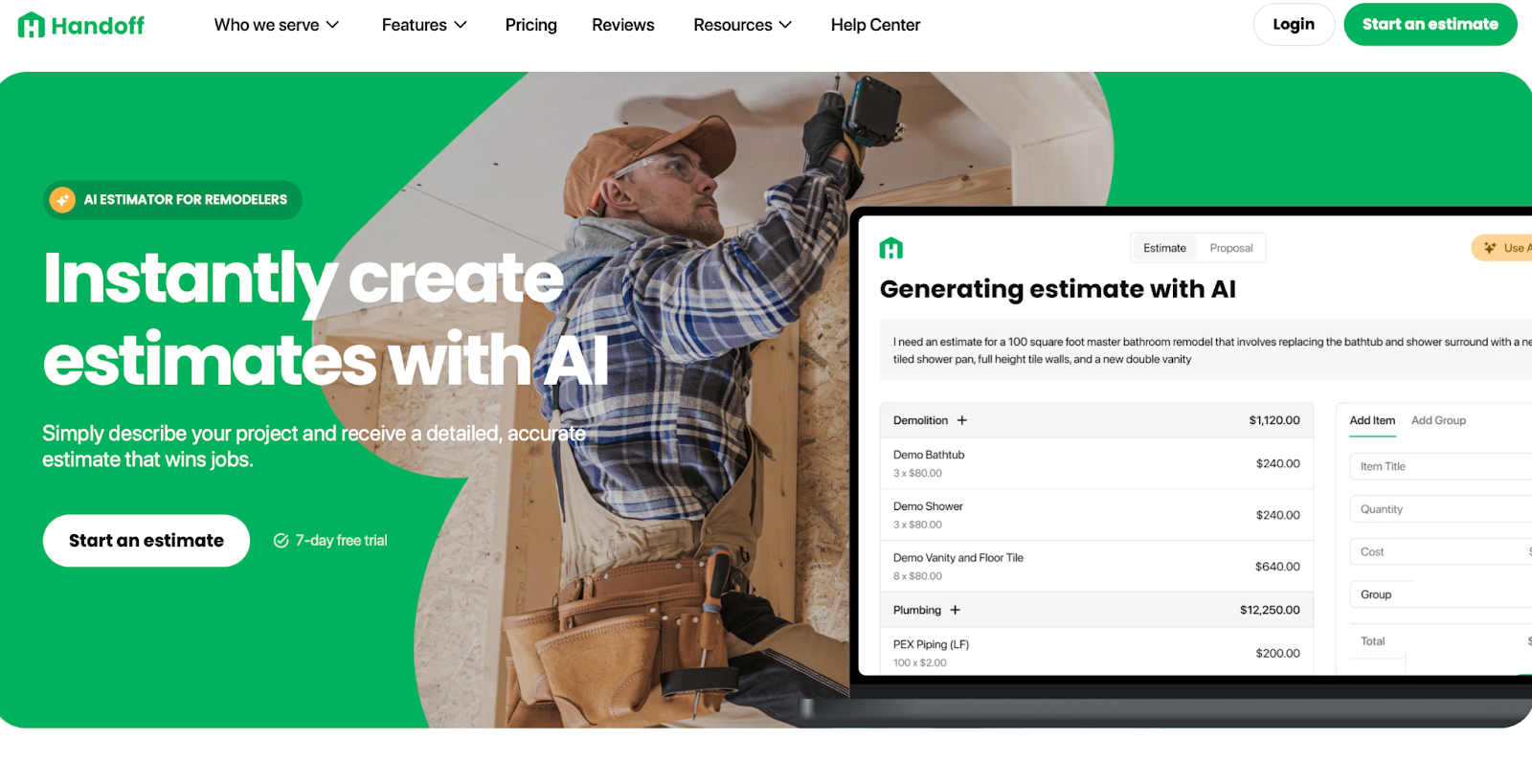Running a home remodeling business is a lot like building a house—you need a solid foundation, the right materials, and a clear blueprint. But let’s be real: when it comes to managing expenses, most contractors would rather hang drywall blindfolded than sit down with spreadsheets.
Between buying materials, paying your crew, and keeping the lights on (literally), it’s easy to feel like your money is doing a disappearing act. That’s where categorizing expenses comes in—it’s like organizing your toolbox so you’re not digging through a mess of receipts when tax season rolls around.
In this guide, we’ll break down the top business expense categories for home remodelers, so you can stop guessing where your money’s going and start making more informed financial decisions. Because let’s face it—nobody got into this business because they love paperwork.
Why Categorizing Business Expenses is Essential For Home Remodelers

Breaking down expenses into categories offers several advantages for home remodelers:
Gain Clear Financial Insights
Tracking individual expenses gives a clear picture of where your money goes. With hundreds of purchases, it’s easy to lose sight of the bigger picture. Categorizing expenses helps identify high-cost areas and areas where savings may be possible.
Make Smarter Financial Decisions
With well-organized financial records, you can make data-driven choices. Knowing how much you spend on labor, materials, and marketing can help you allocate resources more effectively.
Improve Budgeting and Forecasting
By identifying spending patterns, you can better predict future expenses. Some costs are recurring (monthly or quarterly), while others vary based on project demand. Categorization allows for a more accurate and adaptable budget.
Maximize Tax Deductions
Many business expenses are tax-deductible. Many business expenses—such as office supplies, marketing, travel, software, and professional services—are tax-deductible, helping reduce taxable income. Proper categorization ensures you maximize deductions, including home office expenses, vehicle costs, and business meals.
For example, a general contractor can deduct fuel, tools, advertising, and insurance, lowering tax liability. Keeping organized records ensures you don’t miss out on valuable savings come tax time. Proper categorization ensures you don’t miss out on valuable deductions, helping you save money come tax time.
10 Key Business Expense Categories for Home Remodelers

To manage your finances efficiently, it’s crucial to classify expenses correctly. Here are the top 10 business expense categories for home remodelers:
1. Materials and Supplies
One of the largest expenses for home remodelers is materials. Whether it's lumber, drywall, paint, or flooring, tracking material costs ensures you stay within budget and can adjust pricing accordingly.
What to Include:
- Lumber, plywood, and framing materials
- Paint, primer, and finishes
- Flooring, tiles, and carpeting
- Plumbing and electrical components
- Tools and equipment (if purchased rather than rented)
2. Labor Costs and Subcontractors
If you have employees or hire subcontractors, this expense category is essential. Labor costs extend beyond wages and salaries—they include taxes, benefits, and insurance.
What to Include:
- Employee wages and salaries
- Payroll taxes and benefits
- Subcontractor payments
- Workers’ compensation insurance
3. Advertising and Marketing
Getting new clients is vital for business growth. Whether you're investing in digital marketing, print ads, or word-of-mouth referrals, tracking these expenses helps measure ROI.
What to Include:
- Social media ads (Facebook, Instagram, Google Ads)
- Website design and hosting
- Business cards, brochures, and print ads
- Referral program costs
4. Business Insurance
Home remodeling businesses need several types of insurance to operate legally and safely. Tracking these expenses ensures you’re properly covered while staying within budget.
What to Include:
- General liability insurance
- Workers’ compensation insurance
- Commercial auto insurance
- Property insurance for tools, equipment, and office space
5. Office and Administrative Expenses
Even if most of your work happens on-site, administrative expenses play a crucial role in running your business smoothly.
What to Include:
- Office rent (if applicable)
- Internet and phone bills
- Office supplies (paper, pens, ink)
- Business software (accounting tools, project management apps)
6. Vehicle and Transportation Costs
Home remodelers rely on vehicles to transport materials, visit job sites, and meet clients. Tracking vehicle-related expenses helps manage fuel costs and maximize tax deductions. Be sure to read through the IRS website for reminders about using the vehicle deduction.
What to Include:
- Gas and maintenance costs
- Vehicle insurance
- Depreciation on company-owned vehicles
- Lease or loan payments for business vehicles
7. Equipment and Tool Expenses
From power drills to scaffolding, tools and equipment are essential investments. Categorizing these expenses helps track depreciation and plan for future purchases.
Tracking depreciation helps contractors lower taxable income, plan for future equipment purchases, and qualify for special tax deductions like Section 179 and Bonus Depreciation. Instead of deducting the full cost of expensive tools, vehicles, and machinery in one year, they spread it out over time, reducing tax liability annually.
Depreciation tracking also improves financial planning, aids in securing loans, and prevents overpaying taxes. Using accounting software or working with an accountant ensures accurate records, maximizing deductions and keeping the business financially stable.
What to Include:
- Hand tools and power tools
- Equipment rental fees
- Repair and maintenance costs
- Safety gear (helmets, gloves, harnesses)
8. Permits and Licensing Fees
Many remodeling projects require permits, and running a business requires licenses. These costs add up and should be categorized separately for easy tracking.
What to Include:
- Business licensing fees
- Building permits
- Specialty trade licenses
- Renewal fees for certifications
9. Software Subscriptions
Many home remodelers rely on specialized software for project management, client communication, and accounting. These recurring expenses should be monitored.
What to Include:
- Estimating software (Handoff)
- Project management tools (Trello, Buildertrend, CoConstruct)
- Design software (SketchUp, AutoCAD)
- Accounting software (QuickBooks, FreshBooks)
- Cloud storage (Google Drive, Dropbox)
10. Legal and Professional Fees
Hiring professionals for legal, financial, or consulting services is a common business expense. Keeping these costs organized ensures you track every dollar spent.
What to Include:
- Accountant and bookkeeping services
- Business attorney fees
- Tax preparation fees
- Business consulting services
Tax-Deductible Business Expenses for Home Remodelers

Many business expenses for home remodelers are tax-deductible, helping to reduce taxable income. Some common deductions include:
- Tools and equipment depreciation
- Vehicle mileage and fuel expenses
- Home office expenses (if applicable)
- Insurance premiums
- Marketing and advertising costs
- Business-related travel expenses
The IRS categorizes expenses based on their nature. For example, capital expenditures (long-term assets like vehicles and equipment) are deducted differently from routine operating expenses. Always consult a tax professional to ensure you’re claiming every possible deduction.
How to Categorize Your Expenses (Without Losing Your Sanity)
Most contractors would rather wrestle a rogue two-by-four than sit down and organize receipts. But just like a good blueprint keeps a project on track, properly categorizing your expenses helps keep your business finances in check. And trust me, “future you” will thank you when tax season rolls around.
Follow these simple steps to get your business expense categories for home remodelers organized (without wanting to throw your laptop out the window).
Step 1: List Every Expense (Yes, All of Them)
First, grab a coffee (or something stronger—we’re not judging) and list out every business expense. Go big—include everything from lumber and subcontractor fees to those "emergency" fast-food runs when you forget your lunch. Seeing it all laid out helps you spot trends and group similar costs.
Step 2: Dig Into Your Financial Statements
Not all expenses happen like clockwork. While rent and insurance show up on time (unlike some of your subcontractors), things like equipment repairs, travel, and marketing costs can be all over the place. Take a deep dive into your financial accounts over the last few months to make sure nothing slips through the cracks.
Step 3: Sort and Categorize
Now, it’s time to assign each expense to a category. Think of it like organizing your toolbox—group your expenses in a way that makes sense, so you’re not digging through a mess later.
5 Pro Tips for Assigning Expense Categories Like a Home Remodeling Boss
Keep It Simple
Don’t go overboard with 50 different categories—you’re not tracking a NASA budget. Stick to broad but useful categories like materials, labor, insurance, and marketing.
Be Detailed, But Not Obsessive
Too many categories = chaos. Too few categories = confusion. The sweet spot? Finding a balance that makes tracking easy without overcomplicating things. If something doesn’t fit neatly, you can always adjust later.
Group Similar Expenses Together
Think of it like bundling tools—pliers and wrenches go together, just like printer paper and ink should fall under “office supplies.” Likewise, materials like drywall, lumber, and paint can be grouped under “construction materials” instead of having separate categories for each.
Don’t Stress Over the Oddball Expenses
Not sure where to put an expense? Set it aside and revisit it later. If it still doesn’t fit anywhere, create a “miscellaneous” category for those head-scratchers. Just don’t let "miscellaneous" turn into a junk drawer for everything you don’t want to categorize.
Update Regularly (Because Business Changes)
Your expense categories should be as adaptable as you are on a job site. As your business grows, you might need to tweak categories or add new ones. Check in regularly so your financial tracking stays accurate.
Top 3 Accounting Tools for General Contractors

Managing expenses and keeping track of your finances as a general contractor doesn’t have to be a headache. The right accounting tools can automate tasks like invoicing, estimates, and expense tracking, helping you stay organized and profitable. Here are three great options to consider:
QuickBooks is one of the most widely used accounting tools for contractors and small businesses. It helps you track expenses, send invoices, and manage your cash flow all in one place. With bank integration, QuickBooks automatically categorizes transactions, making tax time a lot easier. If you need solid financial reports and tax prep tools, QuickBooks is a great choice.
Wave is a free accounting tool that works well for contractors who need a simple solution without the extra cost. It allows you to send invoices, track expenses, and scan receipts without paying a monthly fee. While it doesn’t have as many advanced features as QuickBooks, it’s a great option for smaller remodeling businesses or anyone just starting out.
Handoff is built specifically for general contractors who want to automate estimates, proposals, and payments. Instead of manually creating bids and chasing invoices, Handoff uses AI-powered automation to generate cost estimates and send professional proposals instantly.
Handoff now seamlessly integrates with QuickBooks, making it easier for general contractors to manage estimates, invoices, and client data without manual entry. Instead of juggling multiple systems and updating records by hand, Handoff automatically syncs your financial data, ensuring accuracy and saving you time. This integration keeps your accounting up to date, eliminates double entry, and provides real-time insights for better financial management. If you want a smoother, more efficient workflow, connecting Handoff with QuickBooks is the way to go.
Every contractor has different needs, so the best accounting tool depends on how much automation and reporting you want. Whether you’re looking for a full-featured system like QuickBooks, a free tool like Wave, or a contractor-specific platform like Handoff, having the right software in place will make running your business a lot smoother.
Common Mistakes to Avoid When Categorizing Home Remodeling Business Expenses
Tracking expenses is a necessary evil in running a profitable remodeling business. But let’s be honest—most general contractors would rather be knee-deep in drywall dust than buried in spreadsheets. Unfortunately, sloppy bookkeeping can cost you big time in lost profits, tax penalties, and that sinking feeling when you realize you forgot to track thousands of dollars in expenses. Here are some of the most common mistakes remodelers make—and how to avoid them.
Mixing Personal and Business Expenses
You might think, “It’s just a quick stop at Home Depot. No big deal if I grab some groceries too.” Wrong. One minute, you're buying lumber; the next, you’re explaining to your accountant why a case of beer and a frozen pizza are showing up in your business expenses. Keep your personal and business spending separate—get a dedicated business bank account and credit card.
Lumping Everything Into One Category
Throwing every single purchase into “materials” is like shoving all your tools into one giant box—good luck finding what you need later. Subcontractor payments belong under labor costs, gas and maintenance should go under vehicle expenses, and that expensive software subscription you forgot you signed up for should be in office/admin costs. Keep your categories clean now, so you don’t end up cursing yourself later.
Forgetting to Track Cash Purchases
We’ve all done it. You grab a few things at the hardware store, pay cash, toss the receipt somewhere between the truck seats, and—poof—it’s gone forever. Those little cash expenses add up fast, and if they’re not tracked, they’re basically money down the drain. Snap a quick pic of every receipt or use an app that lets you log cash purchases before they disappear into the abyss.
Not Accounting for Depreciation
Your tools and equipment work just as hard as you do—until they don’t. That $3,000 table saw isn’t going to last forever, and the IRS knows it. Instead of writing off big purchases all at once, depreciation lets you spread out deductions over time. It’s basically getting paid to acknowledge that, yes, your tools take a beating. If you’re not sure how to track this, an accountant (or good software) can help.
Overlooking Recurring Expenses
Ever looked at your bank statement and thought, “What the hell is this $49 charge every month?” Software subscriptions, storage units, and insurance payments sneak up on you because they get auto-billed. Make it a habit to review these charges so you’re not paying for a service you forgot about—like that fancy CRM system you swore you were going to use.
Misclassifying Subcontractor Payments
Not knowing the difference between an employee and a subcontractor is a great way to get on the IRS’s bad side. Employees get payroll taxes deducted, while subcontractors are independent and should be paid with a 1099. Mix them up, and you could be looking at tax fines—or worse, explaining yourself to an auditor. Keep it clean: W-2s for employees, 1099s for subs.
Ignoring Small Deductions That Add Up
It’s easy to track the big stuff—materials, labor, insurance—but what about the smaller expenses? Gas receipts, work boots, tool belts, mileage to job sites—all these little things are tax-deductible and can save you serious cash. But if you’re not tracking them, you’re giving Uncle Sam a tip he didn’t ask for.
Waiting Until Tax Season to Organize Expenses
If your tax prep method involves dumping a shoebox full of receipts on your accountant’s desk, you’re doing it wrong. Scrambling to categorize everything in one sitting is stressful and guarantees you’ll miss something. Instead, take a few minutes each week (or at least once a month) to update your expenses. Future-you will thank you when tax season rolls around.
Avoiding these mistakes will make your life easier, your finances more predictable, and your accountant slightly less likely to send you angry emails. Keep your expenses organized, track every dollar, and watch how much smoother your remodeling business runs.
Final Thoughts For The Home Remodeler Who Wants and Needs To Track Business Expenses
Running a home remodeling business involves managing multiple expenses, from materials and labor to advertising and insurance. Categorizing your spending helps you track costs efficiently, make informed decisions, and maximize tax savings.
By following these business expense categories for home remodelers, you’ll gain better control over your finances and set yourself up for long-term success.















